State of the Union: Seagate's HAMR Hard Drives, Dual-Actuator Mach2, and 24 TB HDDs on Track
by Anton Shilov on February 7, 2019 2:00 PM EST- Posted in
- HDDs
- Storage
- Seagate
- Helium HDD
- HAMR
- Dual Actuator HDD
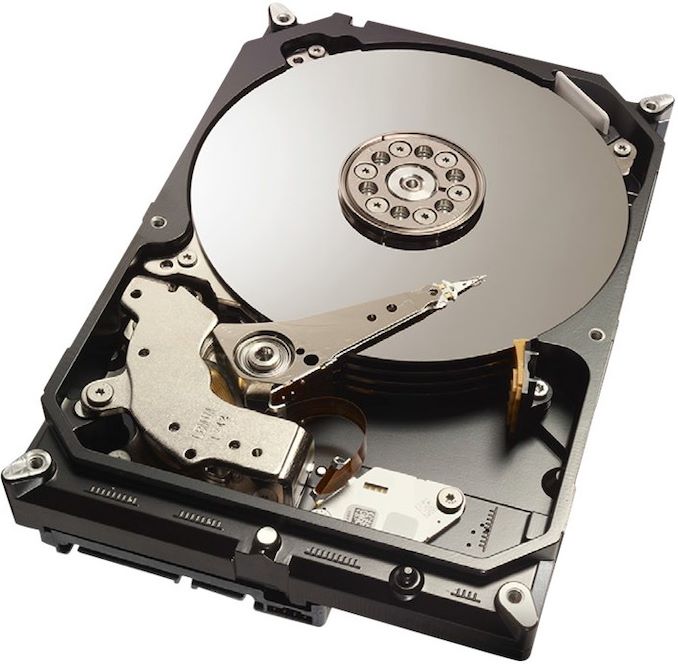
Seagate this week reiterated that the company is on track to launch two crucially important technologies later this calendar year. Firstly, the company plans to start ramping up its 16 TB hard drives featuring heat-assisted magnetic recording (HAMR) technology in 1H 2019. Secondly, the manufacturer intends to launch its first 14 TB HDDs featuring two actuators, up to 500 MB/s sequential read speed, and up to 160 IOPS later this year. Also, the company has stated that it is already testing its next iteration of HAMR that will enable hard drives with capacities up to 24 TB.
Table of Contents
- Need for Storage
- HAMR: Nearly Here
- 24 TB HDDs En Route
- Dual Actuator HDDs Ready for Prime Time
- First Multi-Actuator HDD: 14 TB, ~480 MB/s
- Final Thoughts
| Seagate's Datacenter and Exascale HDD Plans | |||||
| AnandTech.com | H1 2019 | H2 2019* | 2020 | ||
| Capacity | 16 TB | 14 TB | ~20+ TB | 16 ~ 20 TB | |
| Recording Technology | HAMR | PMR | HAMR | ||
| Performance | Over 250 MB/s ~80 IOPS 5 IOPS/TB |
~480 MB/s ~160 IOPS ~11 IOPS/TB |
? ~80 IOPS 4 IOPS/TB |
? | |
| Actuators | Single Actuator | Dual Actuator | Single Actuator | Dual Actuator* | |
| Notes: | *Not confirmed formally | ||||
Need for Storage
The market of hard drives is shrinking in terms of unit sales, but continues to thrive in terms of total capacity shipped as well as revenue. There may be some exceptions (e.g., Q4 CY2018), but the general trend is here. Unit shipments drop because modern laptops cannot accommodate a large 2.5-inch mechanical hard drive, whereas desktops can suffice with just one high-capacity Barracuda Pro-like storage device. What actually drives revenues in modern times are enterprise and exascale cloud datacenter-oriented HDDs that are used to enable services like Azure, Facebook, Gmail, iCloud, Netflix, Prime, and this is just to name a few.
Needless to say, that hard drives aimed at Apple, Facebook, Google, Netflix, Microsoft, and others are the first models to accommodate the latest technologies developed by Seagate (and other manufacturers), which is why it makes sense to pay a close attention to the company’s plans for datacenter HDDs in a bid to understand where the technology is going in general. Some of technologies found in such drives will eventually migrate to consumer HDDs.
HAMR: Nearly Here
HAMR (Heat Assisted Magnetic Recording) is something that Seagate has been working on for over a decade and this year it will finally hit mass production. Among other things, the HAMR technology posed two major challenges that Seagate had to solve. The first one is media itself that can handle a 450°C local heat (made using a laser with an 810 nm wavelength and a 20 mW power) without degrading over time. The second one is a writer with a near-field optical transducer (NFT) that heats the media and which also has to work without flaws for up to a decade or longer. Seagate has developed appropriate media and its writers can handle up to 4 PB per head data transfers, which is more than sufficient for modern enterprise/datacenter HDDs (that are rated for a 550 TB workload a year). In fact, the company says that not only its internally developed media and heads for HAMR HDDs meet datacenter requirements, but so do components designed externally as well.
Seagate officially started to ship its fully functional single-actuator Exos 16 TB HAMR-enabled helium-filled HDDs to select global hyperscale and OEM partners in early December for demonstration purposes. These drives are drop in compatible with existing server infrastructure and power consumption per unit does not exceed 12 Watts. In fact, it is in line with power consumption with other helium-filled HDDs since NFTs do not consume a lot of power at all.
Earlier this week Dave Mosley, CEO of Seagate, said that the company’s HAMR drives will be launched commercially in the first half of this year and will ramp after its partners validate them.
24 TB HDDs En Route
While Seagate is gearing up to launch its Exos 16 TB HDDs officially in the coming weeks or months, the company promises that its HAMR technology will enable it to release hard drives featuring ~18 TB ~ 20 TB or even higher capacities sometime next year. Furthermore, Seagate has already tested tech that will be used for 24 TB HDDs.
Late last year the company said that it had successfully demonstrated platters featuring a 2.381 Tb/in2 (Terabits per square inch) areal density in spinstand testing, which basically means a drive without an enclosure on a test bed. This areal density enables Seagate to make 3.5-inch platters with a 3 TB capacity. Eight of such disks can be used to build a 24 TB HDD. When it comes to longer-term future, Seagate once said that it had developed media with up to 10 Tb/in2 areal density in the lab.
Dual Actuator HDDs Ready for Prime Time
Another of Seagate’s technology that made headlines last year was the company’s Multi-Actuator Technology (MAT) designed to improve sequential and random read and random write performance of hard drives. On a high level, MAT improves MB/s and IOPS performance of HDDs, but a deeper look quickly reveals that this tech is crucial for the upcoming generations of datacenter hard drives in general and not only because of pure performance numbers.
It is well known that operators of exascale datacenters keep power consumption of servers and individual components in check because they can supply a relatively finite amount of power and remove a limited amount of thermal energy. It is also known that the majority of cloud datacenters use SSDs for frequently accessed data and nearline (near online) HDDs to store data that is accessed a bit less regularly. SSDs enable operators of the said datacenters to provide certain services instantly, but even when they need to access data from hard drives, there is a strict standard when it comes to time they need to access their data within their datacenter.
In general, today’s 3.5-inch HDDs offer random performance of 6 – 10 IOPS per terabyte, which is sufficient for contemporary datacenters and is enough to ensure their quality-of-service requirements. Meanwhile, as hard drives gain capacity, their random performance per terabyte drops and once it drops below 5 IOPS per TB (which is believed to be the lowest target for many modern datacenters), such HDDs will no longer meet service level agreement and therefore QoS requirements. Consequently, operators who do not meet their IOPS per TB requirements (whether these are 4, 5, or 7 IOPS per TB) need to either reduce the amount of capacity they use per drive (i.e., buy smaller drives, or pay for capacity they cannot use), or demand drives that offer a higher I/O performance. This was explained Jason Feist, Seagate’s Director of Technology Strategy and Product Planning who is responsible for the company’s datacenter product roadmap.
At present, Seagate can tune hard drives to deliver I/O that its customers require by implementing command queuing and latency-bounded I/O (LBIO) in firmware (i.e., lower performance), but at some point, these methods will cease to work efficiently. In particular Seagate says that at ~16 TB and beyond more and more customers (but not all of them) will need HDDs that could physically feature a higher I/O performance.
To improve I/O performance of next-generation hard drives, both Seagate and Western Digital plan to install two (or more) sets of actuators into a single HDD. The actuators are to be outfitted with their own arms/heads as well as magnets to position them, but will use one pivot. Therefore, the actuators will work autonomously, basically producing parallelism within a single HDD. As hard drives gain ability to read or write with more than one head at any given time, their random read/write performance will scale with the number of actuators. Sequential read/write performance of HDDs will also increase all the way to 480 MB/s (in case of the first-gen MAT-enabled HDDs), but as it will depend on numerous factors, it is hard to make predictions about throughput of next-gen hard drives.
The extra components needed for two independent actuator assemblies (and a considerably more sophisticated HDD controller) will make such HDDs a bit costlier to manufacture when compared to today’s models. This is a reason why going forward Seagate will have at least two lineups of HDDs for hyperscale workloads: one guaranteeing optimal IOPS per TB with multiple actuators and another guaranteeing minimum IOPS per TB and aimed at customers who can manage required performance levels.
First Multi-Actuator HDD: 14 TB, ~480 MB/s
Seagate’s first-generation MAT-enabled HDDs, dubbed Mach2, use two actuators operating on a single pivot point (along with 8 platters and 16 heads). These drives are set to feature a 14 TB capacity, 480 ~ 500 MB/s sequential read/write performance, as well as up to 160 IOPS. What is not completely clear is how much power will these HDDs consume, as the only thing that Seagate says is that they will consume significantly less than two HDDs. The key thing here is that the drives will still be drop-in compatible with 3.5-inch bays, which is the most important thing for operators of exascale datacenters.
Seagate says that it had supplied prototypes of its Mach2 HDDs to its partners and such drives had been used for “live production traffic” for months now. Their volume ramp will begin later this calendar year, yet Seagate does not elaborate.
Final Thoughts
With plans to launch two crucially important technologies in 2019, this year will be fundamentally important for Seagate. The company is ahead of its rivals with its HAMR and multi-actuator technologies, but now it needs to execute and deliver appropriate HDDs to interested parties. Next year will also be important for Seagate as it will have to bring together its HAMR and multi-actuator technologies and offer rather unique drives to its customers.
As noted above, many technologies originally developed for enterprise and exascale datacenter hard drives usually migrate to HDDs aimed at high-end desktops, workstations, and NAS. Obviously, both HAMR and MAT make a great sense for all of the aforementioned applications, but it remains to be seen which of the technologies will be used for “civil” PCs and storage devices first.
Related Reading
- Seagate Starts to Test 16 TB HAMR Hard Drives
- Seagate’s Multi Actuator Technology to Address HDD IOPS Woes
- The Evolution of HDDs in the Near Future: Speaking with Seagate CTO, Mark Re
- 16 TB MAMR Hard Drives in 2019: Western Digital
Source: Seagate


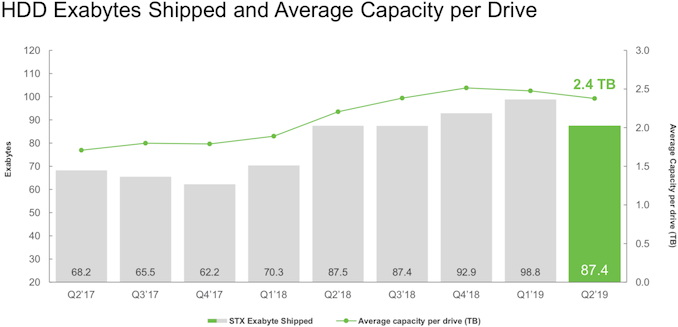

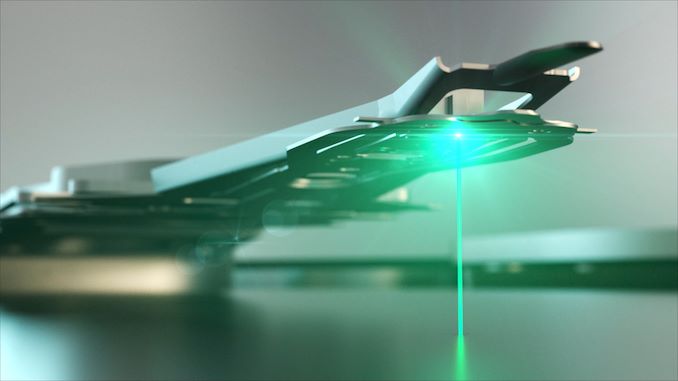

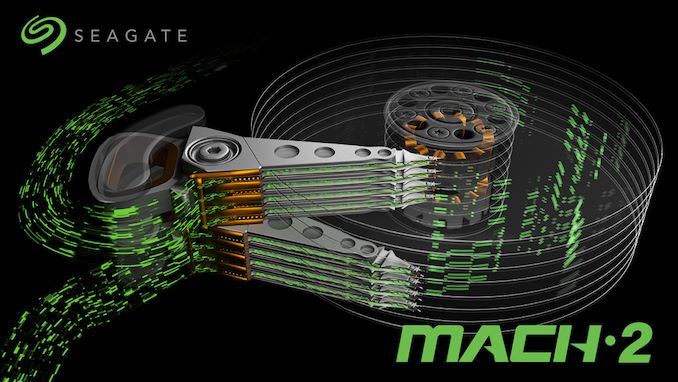
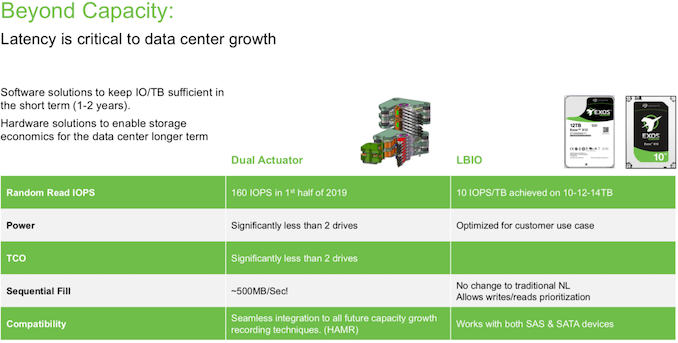









54 Comments
View All Comments
Reflex - Sunday, February 10, 2019 - link
To be fair, some of us rip our DVD/BR collection onto a NAS for usage with Plex.Storagegeek - Thursday, February 14, 2019 - link
My experience has been that they all suck equally now (16 years ago, Maxtor was the one with an 80% failure rate over 3 years).I archive on both Seagate and Western Digital (2 copies offline) and 1 to 3 copies live on local RAID1 or RAID6 and SnapRAID arrays.
It's important to refresh the data on a periodic basis. I use HDSentinel to read , rewrite, then re-read verify the data. It works on the sector level.
There is also the issue of flash memory bitrot in the chips on each drive. If stored in a cool environment, after 20 years , they'll begin to fail. Be sure to copy your data to new drives before the old ones fail. All my 30 year old or older drives and some audio gear that used eeprom or flash microcontrollers have now failed, some quite obviously via bitrot (Onyko tape decks).
Supercell99 - Friday, February 8, 2019 - link
You should go to pornhub instead of saving it locallywumpus - Friday, February 8, 2019 - link
Tell that to the people who liked the stills on tumblr.DanNeely - Thursday, February 7, 2019 - link
That's a bit over a day. Other than on initial loading not a real issue; after that point my NAS only ever reads/writes a tiny fraction of the data on it each day.That said, when I standup NAS-2019 later this year to supersede NAS-2014 (RIP WHS), I'll probably only put 2x 10TB drives in because bigger drives will probably get old enough to justify a precautionary replacement before I run out of space. (I've only got about 3.5 or 4TB of my 2x6TB mirror used on the current system.)
azazel1024 - Friday, February 8, 2019 - link
I don't know, it might make it in to consumer HDDs. SSDs are rapidly approaching HDD storage costs, but they are still a few times off in cost. I like that SSDs provide significantly higher transfer speeds, high enough I wouldn't lean on RAID, which makes it easier to expand storage than needing to exactly match drive specs or completely replacing an array.I use a pair of 3TB drives in RAID0 in my desktop and in my server. My free space is steadily shrinking. Right now I run 2x1GbE links with SMB Multichannel it gets me ~235MiB/Sec of performance over my network. But I am starting to be drive limited in some circumstances because I am getting ever closer to the inner tracks on my drives.
I am hoping I can upgrade my network to 2.5 or 5GbE in the next 1-3 years. At that time, even for a single link, my HDD arrays are going to be the limiting performance factor under many scenarios (and every scenario for a 5GbE link). A pair of 10-14TB HDDs one in each machine would be plenty of storage space to last me at least a few more years and with dual actuators if they can really push ~480MiB/Sec on the outer tracks, I assume that translates to more like 250 or so MiB/Sec on the inner most tracks. That's sufficient performance for my use cases.
So I could do that without even bothering to build a RAID array. That may tide me over till SSDs are cheap enough, or some new HDD technology comes along. I am tipping my toes in to 4k. I don't have much, but throwing a 17GiB file from my desktop to my server takes awhile, even at 235MiB/sec. Having ~300+ MiB/sec of 2.5GbE and a drive that can handle it would be nice.
And if prices were reasonable enough, I'd certainly consider a pair of 10-14TiB drives in RAID0 for each machine (by reasonable I mean less than $1000 for all of the storage). That is about my price cap.
Today that buys me around 10TB of SSD storage for the cheapest stuff. And the cheapest stuff it is questionable if that would cover my needs (300+ MiB/Sec sustained reads/writes on large files, at least until capacity hits 80% or so utilized), at least without RAID.
And 5TB in each machine means I'd be up around 85% utilization. Not good and no room for growth for long at all. 6TB is already getting crunched (I am at 68% utilized free space).
Prices would need to halve. Maybe drop to 1/3 (IE so I wasn't looking at the most bargain basement TLC or QLC drives, but something that was a good performing TLC drive).
I understand about SLC caching on QLC and TLC drives...but it isn't unheard of for me to need to do a full disk backup/transfer from my server to my desktop or vice versa. I've averaged once per year for the last 4 or 5 years having to do that. Sure, I can just set it up and walk away, but ~4TB of data takes a long time as it is at 235MiB/Sec. I don't like the odds if the cache fills up and we are talking maximum 70-120MiB/Sec rates (for QLC drives. The crappier TLC drives are in the 170-200 range. But most nice TLC drives seem to be able to push low to mid 200s sustained writes).
Most of my use cases are 1.5-4GiB files, but I do toss 10-25GiB files across on occasion. And then those rare full disk backups. Oh, also incremental backups may mean transferring 5-50GiB, depending on what I've been doing that week (my backups are setup weekly late at night). Those I don't particularly care how slow they go, so long as it gets done by morning.
ruzveh - Thursday, February 7, 2019 - link
Why cant they simply launch 5.5" HDD with more platters and hence more capacity in single HDD? Sadly in the past few years we have seen a trend where new HDD capacity is launched double the price whereas the existing drives prices are not being lowered. Suppose 10TB is available for $300 then when you launch 14TB HDD, one should price 14TB at $300 and push the pricess of 10TB to next lower slot eg. $200ruzveh - Thursday, February 7, 2019 - link
I would also like to make a point that one cannot add more drives to your motherboard or ATX cabinets. Also there is a drive size and qty limitations when adding NAS. This really makes our investment dead for purchasing new drives.eldakka - Friday, February 8, 2019 - link
I don't understand this comment.If you have a free PCIe slot (preferably x8), you can add a SAS HBA, and with SAS expanders hanging off that HBA a single PCIe slot can control 255 (or more) drives.
And you don't need space in the ATX cabinet/case that hosts the motherboard/HBA, that's what external SAS cables are for.
The NAS I have built has an onboard SAS controller (8-port) and 6 SATA connectors and a free PCIe x8 slot. When I fill the drive bays in the case itself (Silverstone CS380, 8xhotswap plus a couple 5 1/4" which could be converted to 3x or 4x 3.5" with a bay adapter), i'll buy another CS380 or DS280 or similar case and a SAS expander, populate it with HDDs and run an external SAS cable to it.
DanNeely - Thursday, February 7, 2019 - link
The biggest problem is just that HDD makers are hitting the wall hard on physics/engineering limits. Look back on their future capacity predictions over the last decade, they've been missing them by ever larger margins. The days of easy capacity increases are well behind us and each marginal uptick is requiring ever more difficult and expensive parts; and in the case of He drives with 6-8 platters instead of 5 just more parts in total.THe implosions of the cheap laptop/desktop HDD market hasn't helped either. This isn't so much in terms of lost profits to feed R&D: They were very low margin parts, but them going away has left them with large excesses of facilities to maintain and machines going idle before they became obsolete and were due to be scrapped. There's been some closing of facilities, and probably will continue to be more in the future; but because most components/tasks are only made/performed in one or two locations it's not easy to shut facilities down even if all of them are running well below capacity. The 10/15k RPM SAS market's death was probably much lower impact. These were high profit items, but they were also low volume and big companies buying huge numbers of 7200 rpm drives for bulk storage has replaced those revenues. Depending on the timing of when they wound down R&D for them hits from a generation that failed sell enough to earn out its costs or that was cancelled short of release are certainly possible though.